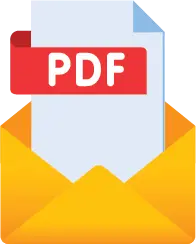Download free PDF
Storm Tracking Apps Market Size - By Operating System, By Functionality, By Deployment Mode, By Solution, By End Use, Growth Forecast, 2025 - 2034
Report ID: GMI14496
|
Published Date: July 2025
|
Report Format: PDF
Download Free PDF
Authors: Preeti Wadhwani, Aishvarya Ambekar



Premium Report Details
Base Year: 2024
Companies covered: 30
Tables & Figures: 180
Countries covered: 23
Pages: 230
Download Free PDF

Storm Tracking Apps Market
Get a free sample of this report
Get a free sample of this report Storm Tracking Apps Market
Is your requirement urgent? Please give us your business email
for a speedy delivery!





Storm Tracking Apps Market Size
The global storm tracking apps market size was estimated at USD 914 million in 2024. The market is expected to grow from USD 936.2 million in 2025 to USD 1.53 billion in 2034, at a CAGR of 5.6%.
Collective market share in 2024 is 52%
Storm Tracking Apps Market Trends
Storm Tracking Apps Market Analysis
Based on operating system, the storm tracking apps market is divided into android, IOS, and others. The android segment dominated the storm tracking apps market accounting for around 55% in 2024 and is expected to grow at a CAGR of over 5% through 2034.
Based on functionality, the storm tracking apps market is segmented into basic storm alerts, advanced radar & satellite imagery, real-time GPS tracking & storm path prediction, integrated emergency communication tools, custom weather notifications & forecasting, and others. The advanced radar & satellite imagery segment dominates the market accounting for around 30% share in 2024, and the segment is expected to grow at a CAGR of over 6% from 2025-2034.
Based on deployment mode, the storm tracking apps market is segmented into cloud-based, on-premises, and hybrid. The cloud-based segment is expected to dominate the market with around 60% share due to the ongoing need for real-time processing needs, global connectivity and cross-device functionality.
Based on end use, the storm tracking apps market is divided into general public, government agencies, agriculture & farming, aviation & airlines, maritime & shipping, logistics & supply chain, and others. The government agencies dominated the storm tracking apps market.
US dominated the storm tracking apps market in North America with around 85% share and generated USD 293.4 million in revenue in 2024.
The storm tracking apps market in Germany is expected to experience significant and promising growth from 2025-2034.
The storm tracking apps market in China is expected to experience significant and promising growth from 2025-2034.
The storm tracking apps market in Brazil is expected to experience significant and promising growth from 2025-2034.
The storm tracking apps market in South Africa is expected to experience significant and promising growth from 2025-2034.
Storm Tracking Apps Market Share
Storm Tracking Apps Market Companies
Major players operating in the storm tracking apps industry are:
Storm Tracking Apps Industry News
The storm tracking apps market research report includes in-depth coverage of the industry with estimates & forecasts in terms of revenue ($Bn) from 2021 to 2034, for the following segments:
Click here to Buy Section of this Report
Market, By Operating System
Market, By Functionality
Market, By Deployment Mode
Market, By Solution
Market, By End Use
The above information is provided for the following regions and countries: